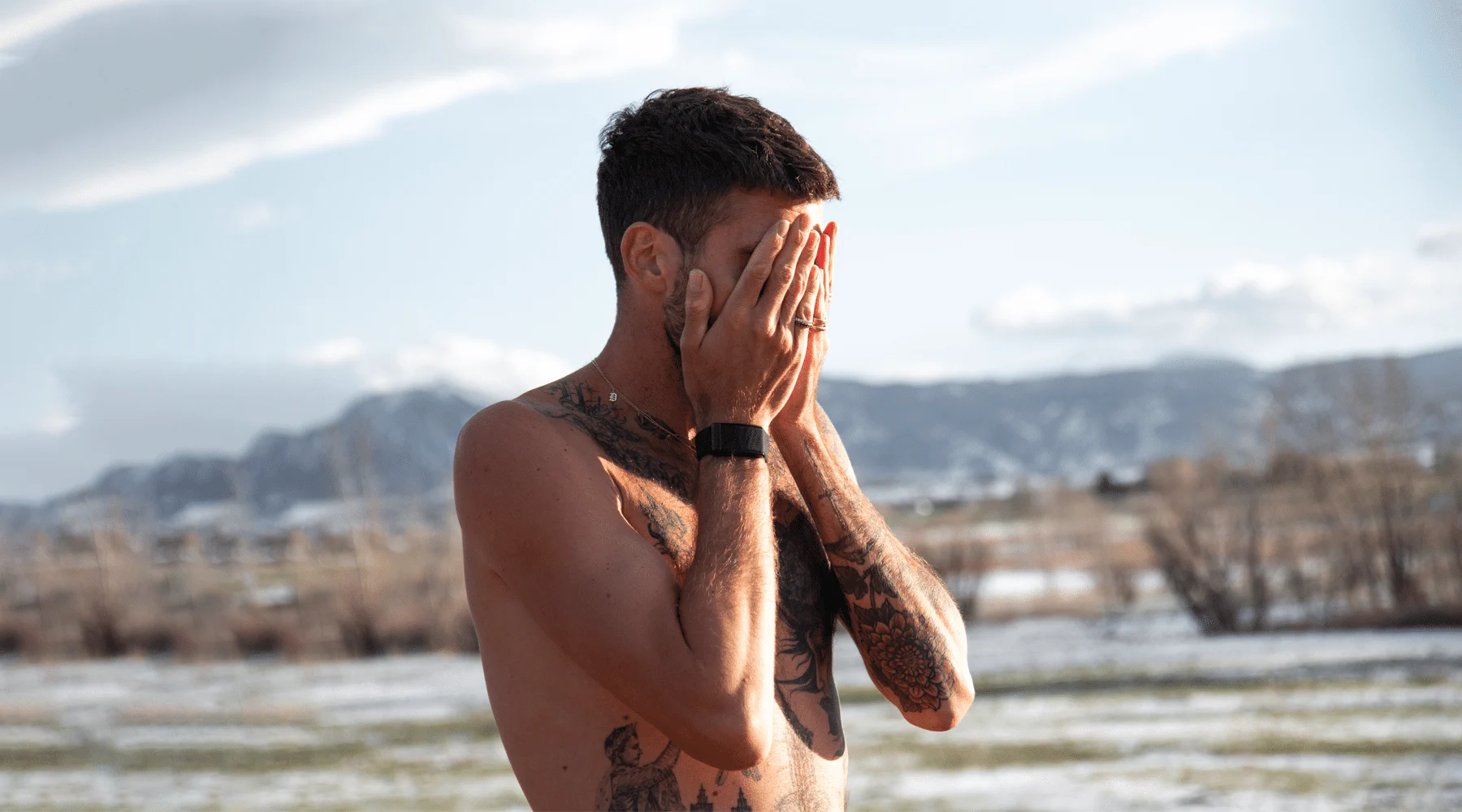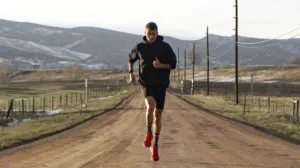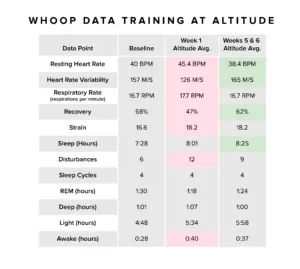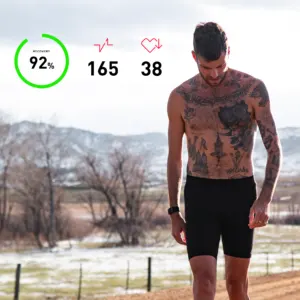Topics
- Article
- Member Stories
- Training & Exercise
Training at Altitude, Living in Isolation

What happens when a competitive runner goes from the busiest city in the world to rural elevation during a pandemic?
David Perry, a figurehead in the New York City running scene, said goodbye to his Brooklyn apartment right before the pandemic skyrocketed and headed to his childhood home in Boulder, CO. This unexpected transition forced him to rethink everything, adjust to altitude, train harder, and monitor it all with WHOOP.
From Chaos to Calm
When David Perry flew from New York City to his parents’ rural home in Boulder, CO back in March, he had no idea what the next 7 weeks had in store. This was right before NYC became the national epicenter for the coronavirus outbreak; nobody knew anything, but everybody knew it was going to get a lot worse. So David packed his bags, booked a one-way flight home, and told his parents he’d be self-quarantining for 14 days. A day later, Governor Andrew Cuomo issued a statewide mandate ordering closure of all schools and non-essential businesses. Perry, a Boulder native, grew up running on the empty farm roads at 5,328 feet elevation. Like most unassuming high schoolers searching to belong, he found running after being “just OK” at all the other sports. Years later he became a high school state champion, a conference champion at a Division I school, and a podium finisher with his team at NCAA cross-country championships. His all-time PRs of 13:58 in the 5k and 28:42 in the 10k solidified him as one of the top sub-elite US runners--those just in reach of making an Olympic standard. On March 17th, he arrived in Boulder without much of a plan. Back in NYC, he was a multitude of things: the head captain of Adidas Runners NYC, an entrepreneur with his own jewelry and apparel lines, and a competitive runner occasionally lining up with the pros. Now, all of that was put on hold as he sought to find purpose in a world turned upside down. No more metro rides to the Diamond District in Midtown, no more track sessions with friends at McCarren park, no more late nights beneath the luminescence of New York City marquees. There was only one thing that got him through the next 2 months and maintained his sanity: running. For most runners, it’s a dream to train at altitude with nothing to do but eat, sleep, and run. The irony was that he couldn’t meet up with hometown friends and local elite training groups like Tinman Elite to get the work done. This training cycle was done in isolation with a filter of uncertainty.
“I’m going to get fit as hell.”
If Phase 1 of quarantine was about acceptance, then Phase 2 was about finding ways to stay active and develop a routine. People asked themselves, What now? How will we cope? How will our mental and physical health be altered? For runners like David with a competitive spirit, the “What now?” question was simple. Run more, get fit, and plan for the next race that wasn’t canceled. And in a beautiful, spacious landscape full of dirt trails, it honestly wasn’t all that bad. It was exactly what he needed to set new goals, refocus, and get back to the basics. “Normal” life was stripped away, leaving room for mental and physical acuity. David used WHOOP to help him.

David became a WHOOP member a few months ago when he heard about it through his Adidas network. The tool was unlike anything he’d ever used as a runner. He had years of experience logging miles in Strava and tallying splits on his GPS watch, but he’d never used technology that’s sole purpose was monitoring stress adaptation and recovery. This was new. He didn’t have to stare down at a number, a pace, or dinging notifications. Much like his transition from sea level to altitude during the time of a pandemic, wearing WHOOP was about removing distractions and honing in on improving performance. “I was excited to use WHOOP,” he says. “I thought it could help me understand the strain I was putting on my body running more miles with higher intensity as I always do when I head home to Colorado.” With nothing else to do but increase mileage and train, David used WHOOP to make sure he was recovering properly and not digging himself into a hole.
How Altitude Impacts Resting Heart Rate, HRV, and More
It’s no secret that training at elevation can improve fitness and performance. However, by monitoring data 24/7 with WHOOP, David was able to get more detailed information than ever before. Below is a chart that outlines David’s baseline WHOOP metrics (pulled from a 30-day average), his first week at altitude, and his last weeks at altitude. The chart shows a clear trajectory of ups and downs largely influenced by the changes in oxygen levels.

DAVID'S BODY WEEK 1 IN ALTITUDE: We already know altitude exposure is associated with major changes in cardiovascular function including increased heart rate and blood pressure, and a reduction of hemoglobin saturation. Week 1 of altitude resulted in a higher resting heart rate (RHR), lower heart rate variability (HRV), and lower recovery averages, which meant his body was working harder to get back to baseline. Notice a higher average strain, despite not changing his running routine the first week home. Sleep was greatly impacted for David. Altitude can disrupt sleep causing frequent awakenings and sleep fragmentation. This can lead to fatigue the next day. David doubled his number of sleep disturbances and got far more light sleep than usual. David’s respiratory rate (RR) increased by 1 breath on average during that first week, which may seem marginal, but is statistically significant since resting RR does not fluctuate often day to day. Changes in respiratory rate are usually related to meaningful changes in physiology.

AFTER WEEK 6, HE'S FITTER THAN BEFORE
After 6 weeks of training in elevation, David recorded an average lower RHR and higher HRV. This indicated that his body adapted to reduced levels of oxygen, improving his overall fitness. David’s sleep improved. More sleep was surely a result of being in quarantine with earlier bedtimes, but it was also proof that his body had adjusted to sleeping in elevation. His disturbances and awake time went down, and his REM crept back up to normal. David maintained a higher strain than normal, which he attributes to increasing mileage. “Whoop has given me a new relationship with sleep,” he says. “I can see what’s impacting my sleep quality and if it’s actually helping me recover.”
Future Winning
The tagline for David’s running apparel brand, BLK RBN which he founded five years ago, is appropriately named for this: “Future Winning.” The running world and sports in general have lost so much this year. The Olympics. The Boston Marathon. NCAA championships. It’s been devastating to be without so many of these things that unite us. While athletes’ dreams have been postponed, this indefinite pause has not been wasted. Like so many runners out there, David has used this time to ask himself the tough questions: What comes next in life, and how do I achieve it?

After 7 weeks away from the city, David has returned home with a new vision. The passions are still the same, but the execution will be a little different this time around. “With proper preparation, execution, taking care of the small details, and always remembering this shit needs to be fun, I just may find that win.”